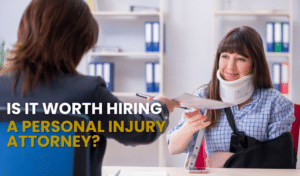Chalaki Law understands the challenges you may be facing after a bicycle accident, and we are dedicated to providing you with exceptional legal services in Dallas and anywhere in Texas. We understand that this may be a challenging time for you, and to help you begin we want to offer you a free case evaluation where one of our compassionate and experienced Dallas bicycle accident lawyers will carefully assess the details of your case. Then our experienced bicycle accident lawyer will then provide you with the best course of action to take, keeping your unique circumstances in mind.
We know the physical, mental, and financial difficulties you’re going through after a car accident or even fatal bike accidents in Dallas. Our team of empathetic Dallas bicycle accident attorneys understand the challenges you may be facing after bike accidents, and we are committed to working tirelessly to help you obtain the compensation you rightfully deserve. Our Dallas bicycle accident attorney also understands that you want to feel confident and secure in your case, and we want to assure you that Chalaki Law is dedicated to providing excellent legal representation for your bicycle accident case.
TEXAS BICYCLE ACCIDENT STATISTICS
The number of cyclists getting killed in biking accident crashes has seen a recent surge in Texas. From 2017 to 2021, Texas roads and highways had a record of 364 bicyclist fatalities. The year 2021 witnessed a total of 2,267 traffic accidents involving uninsured motorist, injured bicyclists and automobile accident in Texas. 92 fatalities resulted from these accidents. This is a 12 percent increase in the number of bicycle accident in Dallas over the previous year. These collisions primarily occurred due to the motorist’s inattention and their refusal to give up the right of way at stop signs.
Texas Bicycle Laws
Texas is known for its popular cycling activity and mode of transportation. The state has implemented specific bicycle laws to prioritize the safety of cyclists and encourage peaceful coexistence on the road with other vehicles. The objective of these laws is to safeguard cyclists and make certain that they are granted identical rights and duties as other individuals who use the road. Every cyclist must comprehend and comply with these laws to an essential extent.
Definition of a Bicycle: According to Texas law, a bicycle is classified as a vehicle that operates with pedal-powered human force. Acknowledging the importance, it is recognized that bicycles have specific rights and responsibilities on the road. Motor vehicles are comparable to them.
Traffic Laws Applicable to Cyclists: Cyclists in Texas must follow the traffic laws just like motorists, but with a few bicycle-related exceptions. These include stopping at stop signs and red traffic lights. Indicate turns or stops using hand signals and yield the right-of-way when necessary. Familiarizing oneself with these traffic laws and acting in accordance with them is crucial for cyclists. The safety of both themselves and others will be ensured.
Riding Position and Lane Usage: Cyclists in Texas are generally allowed to ride on the right side of the road. Following the flow of traffic is important. The full lane can be used by them if the lane is too narrow to safely share with a motor vehicle. If the road conditions are unsafe for riding on the right side. In order to decrease the likelihood of accidents, cyclists should ensure they ride with a predictable and safe position in such circumstances.
Bicycle Equipment and Safety: Texas law mandates specific equipment and safety measures for bicycles. A front white light and a rear red reflector or light are necessary for cyclists when riding at night. Brakes on bicycles should be capable of stopping the rider within a reasonable distance. Wearing a properly fitted helmet is strongly recommended for cyclists of all ages. Although it is only legally required for riders under the age of 18.
Sidewalk Riding and Pedestrian Safety: In Texas, local ordinances may dictate whether cycling on sidewalks is allowed or restricted in specific areas. Being aware of their surroundings and prioritizing pedestrian safety is essential for cyclists when riding on sidewalks. When allowed, cyclists must yield to pedestrians and take precautions to avoid any collisions. Respecting the rules regarding sidewalk riding in the respective municipality or jurisdiction is crucial.
Types Of Injuries In Bicycle Collisions
Spinal Cord Injury: Collisions involving bicycles may lead to spinal cord injuries. The injuries can lead to lasting and potentially irreversible effects. The severity of the impact determines the degree of damage the spinal cord can undergo. Loss of motor function and sensation below the injury site can be either partial or complete. Spinal cord injuries can greatly impact an individual’s mobility and quality of life.
Traumatic Brain Injuries (Tbi): The head is particularly vulnerable in bicycle collisions. Traumatic brain injuries can occur due to direct impact or when the head hits the ground or a solid object. TBIs range from mild concussions to severe brain trauma. These injuries can have profound physical, cognitive, and emotional effects, requiring extensive medical intervention and rehabilitation.
Back Injury: Bicycle collisions often subject the back to sudden and forceful impacts. Herniated discs or vertebral fractures are examples of more severe conditions that can fall under the category of back injuries, which also include sprains and strains. These injuries can lead to pain, restricted mobility, and the necessity for ongoing treatment and rehabilitation.
Cervical Neck Fracture: Fractures in bicycle collisions can easily occur in the neck, especially in cases of severe impact.
Cervical neck fractures can result in significant pain, restricted movement, and potentially lead to neurological complications if the spinal cord is affected. Immediate medical attention is crucial to prevent further damage.
Broken Bones: Fractures commonly occur in bicycle collisions, affecting various bones such as the arms, legs, wrists, and ribs. The impact from a collision can result in direct bone fractures or indirect fractures due to falls or twists. Depending on the severity, fractures may require immobilization, surgical intervention, and extensive rehabilitation.
Internal Organ Damage And Internal Bleeding: The liver, spleen, kidneys, or lungs can be injured as a result of severe bicycle collisions. There is a risk of life-threatening conditions if internal injuries is not promptly addressed in some situations. Prompt addressing is essential to prevent life-threatening internal bleeding. Immediate medical intervention, surgery, and ongoing monitoring are often necessary for these injuries.
Lacerations, contusions, and abrasions: Lacerations, bruises, and abrasions are often superficial injuries that can be seen in bicycle collisions. The body’s direct contact with the ground, other objects, or vehicles involved in the collision is what causes these injuries.
Soft Tissue Damage: Bicycle collisions can cause damage to soft tissues like muscles, tendons, and ligaments. The occurrence of strains, sprains, and tears may result in pain, swelling, and. To recover from soft tissue injuries, physical therapy, rest, and gradual rehabilitation are typically required.
Wrongful Death: Unfortunately, some bicycle collisions have tragic outcomes with fatalities. When impact forces, head injuries, and severe trauma coincide, it can lead to the loss of life. Wrongful death cases may arise from bicycle collisions caused by negligence or other factors. The destructive aftermaths of these cases are underscore.
Types Of Bicycle Accidents
Vehicle-bicycle collisions: Collisions between vehicles and bicycles, involving direct contact, are a frequent type of accident. Serious harm or fatal consequences can be inflicted upon cyclists due to these collisions. If vehicles fail to yield to cyclists, accidents can happen. Furthermore, it could happen when a vehicle inaccurately estimates its speed or disregards its visibility on the road. Intersection collisions and collisions at traffic lights are common scenarios for these accidents.
Left Turn: Left-turn accidents occur when a motor vehicle making a left turn collides with a cyclist traveling straight through an intersection or crossing. In many instances, drivers fail to perceive or adequately foresee the arrival or velocity of a cyclist, which often leads to these accidents. This may result in a hazardous collision.
Right-turn: Right-turn accidents often happen when a cyclist approaching from behind or riding alongside a motor vehicle turning right at an intersection or driveway is not noticed or yielded to properly. The cyclist may be in the vehicle’s blind spot, leading to a collision.
Blind Spot Accidents: Instances where a cyclist is concealed by a vehicle’s blind spot. Inadequate checking of the blind spot when changing lanes or making maneuvers can lead to these accidents. This results in a collision with a cyclist riding adjacent to or slightly behind the vehicle.
Improper Lane Changes: Accidents may occur if a driver fails to signal or check for cyclists before changing lanes. Checking blind spots and using turn signals are crucial for drivers to prevent accidents when changing lanes. Side-swipe collisions or forcing the cyclist off the road can occur when blind spots are not checked or the distance and speed of an approaching cyclist are underestimated.
Failure To Yield Accidents: Accidents caused by failure to yield occur when a motorist does not give the right-of-way to a cyclist, especially at intersections, crosswalks, or when turning. The outcome of these accidents can be severe injuries or even fatalities. This kind of accident can lead to severe collisions and injuries. Failure to understand their respective rights and responsibilities can have detrimental consequences.
Speed-related Collisions: Cyclists face a considerable danger from vehicles that are speeding. A cyclist may not give a motorist traveling at an excessive speed enough time to react or stop in speed-related collisions. Severe accidents may occur, potentially endangering lives.
Drunk driving accidents: Cyclists are at risk of accidents caused by drunk driving when a driver operates a vehicle while intoxicated. When intoxicated, judgment, reaction time, and coordination are affected, which raises the chances of colliding with cyclists and causing serious injuries or death.
Doored Cyclists: Dooring accidents happen when a parked vehicle occupant opens their door into the path of an oncoming cyclist. Insufficient time for reaction or avoidance may result in a collision with the open door for cyclists.
Filing A Bicycle Accident Lawsuit In Texas
Should you have suffered bicycle accident injuries or damages, it is important to know that you may have grounds to pursue a lawsuit in order to seek compensation for your losses. It is vital to comprehend the legal process and considerations associated with filing a bicycle accident lawsuit in Texas.
Seek Immediate Medical Attention: Following bicycle accidents in Dallas, your health and well-being take precedence. Immediate medical attention is necessary for your injuries, regardless of how minor they may seem initially. Obtaining prompt medical documentation of your injuries will be vital in building a strong case.
Gather Evidence: Retrieve and safeguard evidence regarding the collision. The inclusion may involve photographs of the accident scene, damage to your bicycle, any visible injuries, and contact information of witnesses. Furthermore, acquire duplicates of police reports, medical records, and any other pertinent documents that can substantiate your assertion.
Consult with an Experienced Bicycle Accidents Attorney: You might consider consulting with a personal injury attorney who has expertise in handling bicycle accident cases or a personal injury claim, specifically in Texas. Your accident’s circumstances can be analyzed by an experienced bicycle accident lawyer. Assisting in identifying liability and providing guidance throughout the legal proceedings. They will make sure your rights are preserved and represent you.
Prove Negligence: Establishing that another party’s negligence caused your injuries is crucial in pursuing a successful bicycle accident lawsuit. Gathering evidence, such as witness statements, photographs, and accident reports, can help in achieving this. Harm to another person can result when someone fails to exercise reasonable care, which is known as negligence. Actions that can be included are distracted driving, not yielding, speeding, or breaking traffic laws.
Comparative Negligence: Texas follows a modified comparative negligence rule. Being partially at fault for the accident can result in a reduction of the compensation you receive. You may be disqualified from recovering any damages if your share of fault is over 50%.
Insurance Claims: Exploring potential insurance coverage is a crucial step before filing a lawsuit. Liability insurance is mandatory for drivers in Texas, and it could potentially cover the damages you experience. Your experienced attorney can assist you in dealing with your insurance company, negotiating settlements and informing you of your legal rights.
Damages: Different forms of damages can be pursued for your bike accident injuries. These include medical expenses, lost wages, pain and suffering, property damage, and possibly punitive damages in cases involving gross negligence or intentional misconduct.
Statute Of Limitations For Texas Bicycle Accident Claims
If you sustain an injury in a bicycle accident, there are two alternatives available for compensation. You can choose between submitting a claim to the insurance company of the party responsible or pursuing a personal injury lawsuit in civil court. The legislation states that individuals who are harmed in a bicycle accident have a two-year window from the incident date to commence a legal case. In case of non-submission by the mentioned date, it is highly probable that the court will dismiss your case. Recovery of damages is not feasible.
Insurance claims are also subject to the statute of limitations. You have two years from the date of your injury to file a claim, although it is usually a good idea to start your case much sooner.
Compensation For A Bike Injury
In the aftermath of a bicycle crash, you could be too wounded, too disturbed, too disabled, or too traumatized to return to work temporarily. Make sure to prioritize your recovery and seek the required medical attention. If and how much compensation you might receive is something that naturally causes worry.
Medical Expenses: Compensation can be sought for the medical expenses related to your injury. The mentioned expenses comprise hospital bills, surgical procedures, prescribed medication, rehabilitation, physical therapy, and any forthcoming medical costs linked to your recuperation.
Lost Wages: Compensation for the wages lost during your recovery period may be available if your injury resulted in missed work or a decrease in earning capacity. Both past and future lost income can be encompassed in this.
Pain and Suffering: The purpose of compensation for pain and suffering is to acknowledge the bodily and emotional anguish that you have undergone due to the accident and your injuries. It aims to provide financial support and acknowledgment for the pain and suffering you have endured. The inclusion can consist of physical pain, mental anguish, emotional distress, loss of enjoyment of life. And any other non-economic damages you have endured.
Property Damage: Compensation may be available to you if your bicycle suffered damage or was completely destroyed in the accident. Your bicycle can be repaired or replaced using this compensation. Other personal property, such as equipment or accessories, may also be covered in addition.
Disability and Disfigurement: ompensation may be available if the bicycle accident caused long-term or permanent disability, scarring, or disfigurement, to help with the effects on your quality of life, future earning potential, and emotional health.
Loss of Consortium: In specific situations, if a serious bicycle accident caused injuries that have greatly impacted your relationship with your spouse or family members, they may have a legitimate claim to seek compensation for the loss of consortium. The loss of companionship, support, and intimacy is being referred to.
Punitive Damages: In many bicycle accident cases where the at-fault party’s conduct was particularly egregious or intentional, punitive damages may be awarded. Punitive damages aim to punish the responsible party and deter similar behavior in the future.
Who Is At Fault In A Bicycle Accident In Texas?
The examination of the specific circumstances of the incident is crucial in determining fault in a bicycle accident in Texas. Texas follows a comparative negligence system. Multiple parties can share fault and liability based on the level of negligence each party has.
In general, the at-fault party in a bicycle accident is the one whose negligence or wrongful actions caused or contributed to the accident. The term negligence means not taking reasonable care and causing harm to someone else. Here are some common scenarios and considerations when determining fault in a bicycle accident in Texas:
Motorist’s Fault: The motorist may be held responsible for an accident if they fail to give the right-of-way to a cyclist, drive distractedly, speed, ignore a red light or stop sign. Accountability can also be imposed if they make an unsafe lane change or disregard traffic laws. Nevertheless, it is crucial to acknowledge that every case is distinct and requires individual assessment.
Cyclist’s Fault: Cyclists must prioritize following traffic laws and being cautious. Cyclists who disobey traffic signals, ride against traffic, ignore right-of-way rules, or act recklessly and contribute to an accident may be considered partially at fault. Nonetheless, it is essential to factor in other elements that could have had an impact on the accident. Should the cyclist adhere to all traffic laws and regulations, and the accident be solely due to the negligence of another party, the cyclist cannot be held accountable.
Shared Fault: Texas follows a modified comparative negligence rule. Even if the cyclist is partly responsible for the accident, they can still pursue compensation. Their received amount may decrease depending on the percentage of fault. Recovering any damages may be barred if the cyclist’s share of fault is determined to be 51% or more. Nevertheless, if their proportion of fault is below 51%, they might have a chance to obtain partial damages.
Other Factors: In addition to road conditions, weather conditions, visibility, and the actions of other third parties can also have an impact on the accident and influence how fault is allocated. The driver is still responsible for exercising caution and following traffic laws, despite these factors. Collecting evidence is crucial, which includes obtaining witness statements, police reports, and any existing video footage. This evidence will support your claim and help determine fault accurately.
Why Is It Important To Provide The Witness Information To Your Dallas Bicycle Accident Lawyers?
Unlike car occupants, who are protected by the metal frame of the cars, bicyclists do not have anything between them and the road and vehicles. If they are struck, they often have to get medical help, and they may suffer many very serious injuries.
If you are injured in a bicycle accident, before you go to the hospital, it is crucial for you to try to get the names and contact information for all witnesses who saw what happened if you can do so. Write the information down or ask someone else to do it for you if you can’t. This will make it much easier to find the people and get their statements later on during your accident investigation. Your bicycle accident attorney will then be better able to locate the witnesses when he or she is building your case.
Before you go to the hospital, it is important for you to try to get the names and contact information for all witnesses who saw what happened if you are able to do so. Write the information down, or ask someone else to do it for you if you can’t. This will make it much easier to find the people and get their statements later on during your accident investigation. Your bicycle accident attorney will then be better able to locate the witnesses when he or she is building your case.
How Can A Dallas Bicycle Accident Lawyer Help Injured Victims After The Accident?
A Dallas bicycle accident lawyer can provide invaluable assistance to a bicycle accident victim in several ways:
Legal Guidance and Evaluation: By evaluating the specific circumstances of your case, an experienced bicycle accident attorney can analyze evidence and provide a professional viewpoint on the viability of your claim. They have the ability to aid in your comprehension of your rights. They have the ability to explain the legal process and offer guidance on the most suitable course of action. They also offer a free consultation for their clients.
Establishing Liability: The complexity of determining liability in a bicycle accident is high. An extensive investigation by a skilled attorney may involve gathering evidence, interviewing witnesses, and reconstructing the accident if deemed necessary. The liability of the at-fault party will be established through their work. Whether it is a negligent driver, a property owner, or any other responsible entity.
Handling Insurance Claims: Challenges often arise when dealing with insurance companies. An attorney can advocate for you by interacting and bargaining with insurance adjusters, ensuring the protection of your rights. Their goal is to optimize your compensation and guarantee fair treatment throughout the claims procedure.
Building a Strong Case: An attorney will help gather and preserve evidence, including accident reports, medical records, witness statements, and expert opinions. Your claim for damages will be backed by a strong case they will build. Included in this are medical expenditures, wage loss, emotional pain, and any other losses that you may have faced.
Negotiating Settlements: Settlement negotiations resolve numerous bicycle accident cases. Your attorney will employ their negotiation skills and legal knowledge to advocate on your behalf during settlement discussions. Their goal is to ensure a just and reasonable settlement that fully reimburses you for your injuries and damages.
Litigation Representation: Your attorney can represent you in court if a fair settlement cannot be reached. Preparation for trial, presentation of evidence, questioning of witnesses, and making arguments on your behalf will be done by them. You will be led through the litigation process by them and they will work relentlessly to seek a positive result.
Emotional Support: Having a compassionate lawyer at your side during a traumatic incident is a blessing. There are many emotions that you are feeling all at once when accidents happen, a bicycle accident lawyer would be able to help you process what you feel so that you can focus on recovery.









